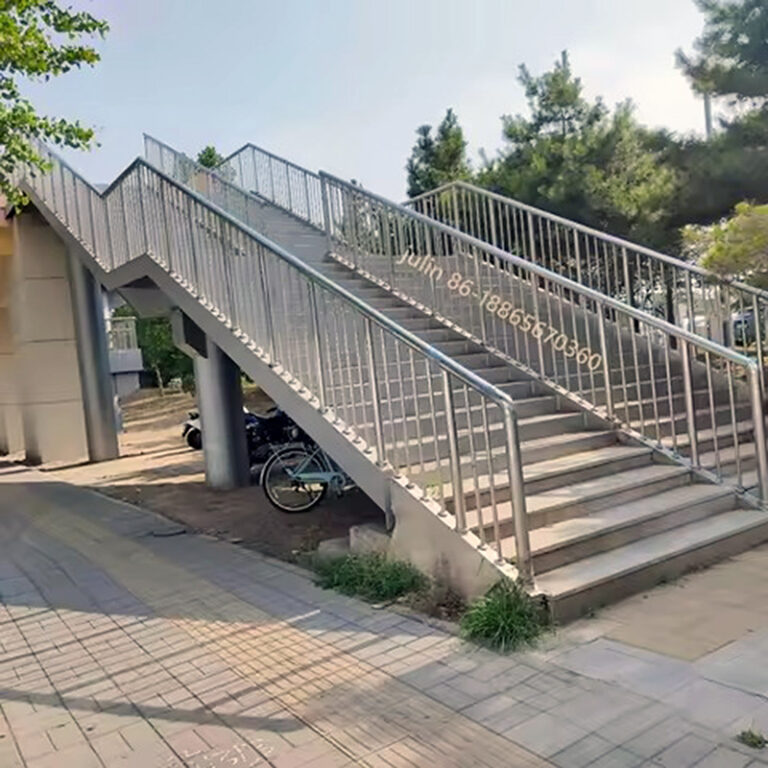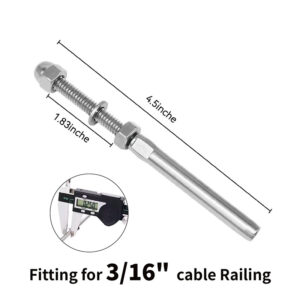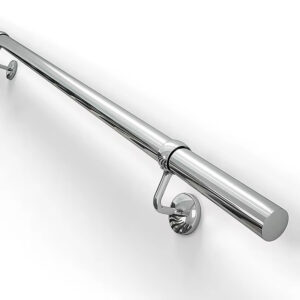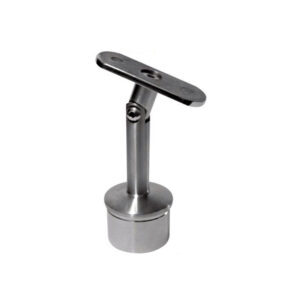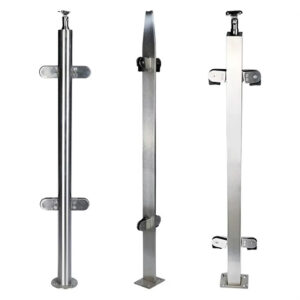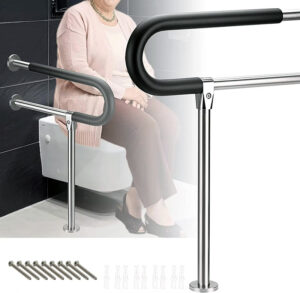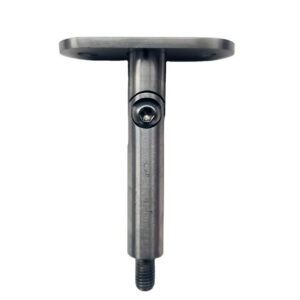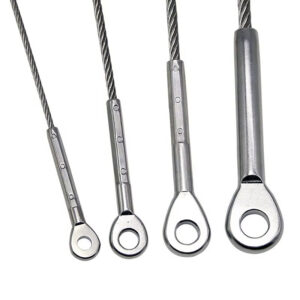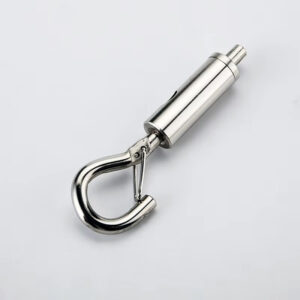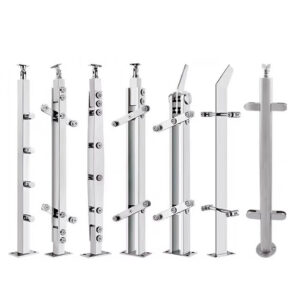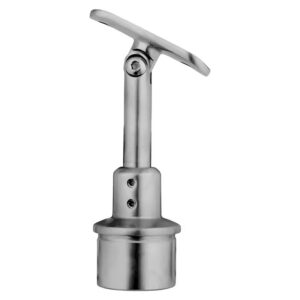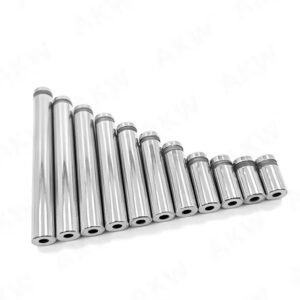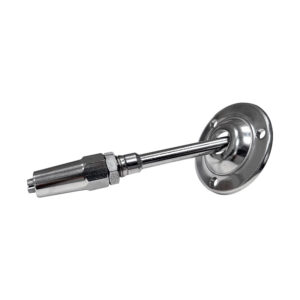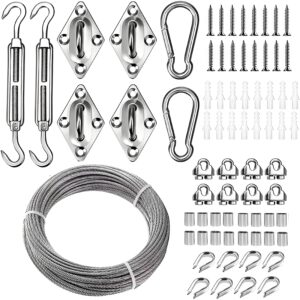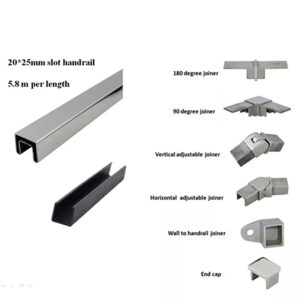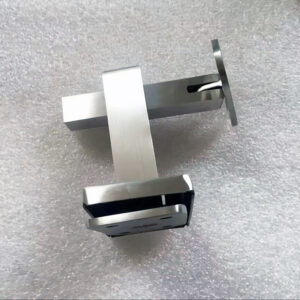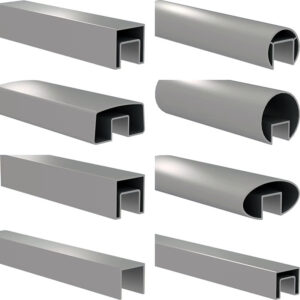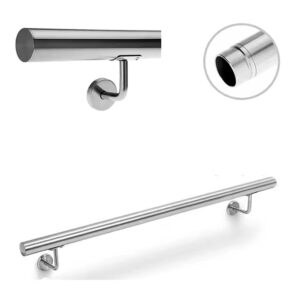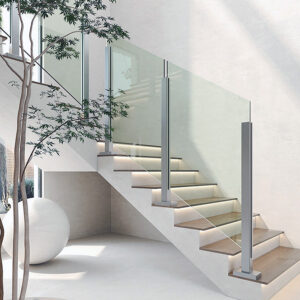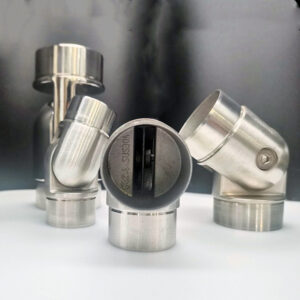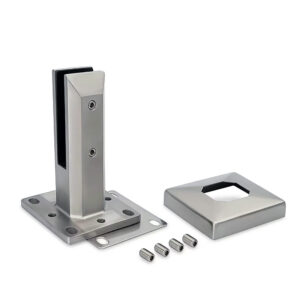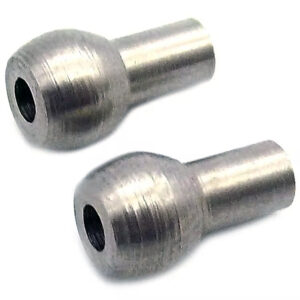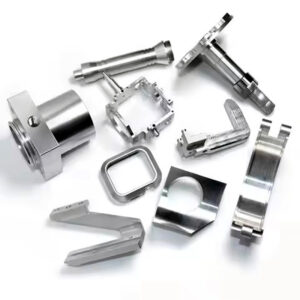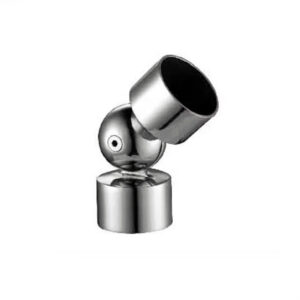Waterfront projects demand railing systems that won’t fail when salt spray, wind loads, and constant moisture test every connection. After 23 years manufacturing stainless steel hardware, we’ve learned that waterfront railing solutions succeed or fail based on three factors: material selection that matches the environment, installation systems that work the first time, and components engineered for the loads they’ll actually face. The difference between a reliable installation and a costly callback often comes down to understanding what marine conditions really demand from your hardware.
Complete Waterfront Railing Systems
Marine-Grade Material Solutions
316L Stainless Steel Systems form the backbone of reliable waterfront railing fabrication 316L applications. This isn’t just upgraded 304—the molybdenum content provides measurable corrosion resistance that translates to 15-20 year service life in direct salt exposure versus 3-5 years for standard grades.
Handrail Systems include wall-mount, post-mount, and continuous support configurations. Our marine grade waterfront systems ODM capabilities mean standard mounting centers (6′, 8′, 10′) with adjustable brackets for irregular spans. Load ratings meet IBC requirements with 20% safety margin for wind loading.
Post and Infill Components feature through-welded connections and sealed mounting hardware. Glass panel systems use structural glazing gaskets rated for coastal wind loads. Cable systems maintain tension through thermal cycling with our spring-loaded tensioners.
Surface Treatment Options include brushed #4 finish for maintenance ease and mirror polish where appearance matters. Brushed surfaces hide minor scratches and water spots—practical for high-traffic waterfront applications.
Engineered Connection Hardware
Standard mounting hardware eliminates field fabrication delays. Wall brackets handle outlined loads to 200 lbs per linear foot. Post mounting systems accommodate concrete, steel, and composite deck attachment with galvanic isolation where needed.
Component Compatibility across our product lines means mixing post styles, infill types, and mounting methods without custom fabrication. This flexibility reduces inventory complexity while maintaining installation speed.
Technical Specifications for Marine Environments
| Material Grade | Environment | Expected Service Life | Cost Premium |
|---|---|---|---|
| 316L Stainless | Direct salt exposure | 15-20 years | +25% vs 304 |
| 304 Stainless | Protected coastal | 8-12 years | Standard |
| Hot-dip galvanized | Inland waterfront | 10-15 years | -15% vs 304 |
| Railing System | Wind Load Rating | Installation Time | Maintenance Schedule |
|---|---|---|---|
| Post-mount glass | 20 psf base + 50% | 4-6 hrs per 20′ | Annual inspection |
| Cable infill | 30 psf with deflection limits | 3-4 hrs per 20′ | Tension check 6 months |
| Picket systems | 25 psf standard loading | 2-3 hrs per 20′ | Bi-annual cleaning |
“Marine-grade railing systems reduce lifecycle costs by 40-60% compared to standard materials in salt environments.” —Coastal Engineering Research Council
▶ Get Complete Specifications ◀
Proven Waterfront Applications
Commercial Waterfront Projects
Marina and Harbor Installations represent our most demanding applications. A recent 2,000-linear-foot marina project used 316L post systems with cable infill, installed in sections to maintain facility operations. Installation averaged 25 linear feet per day with two-person crews, completing ahead of schedule despite tidal access restrictions.
Waterfront Restaurants and Retail require railings that perform structurally while maintaining aesthetic appeal. Glass panel systems with 316L hardware provide unobstructed views while meeting commercial building codes. Our precision waterfront components ensure consistent sight lines across long runs.
Public Waterfront Spaces demand durability and low maintenance. Boardwalk railings see constant use plus salt spray exposure. Brushed 316L handrails maintain appearance with quarterly cleaning, eliminating the refinishing cycles typical with painted systems.
Residential Waterfront Solutions
Multi-unit Housing projects benefit from standardized railing solutions that reduce per-unit costs while maintaining quality. Modular post spacing and prefabricated rail sections cut installation time 30-40% versus custom fabrication approaches.
Private Dock and Deck Applications often require custom waterfront manufacturing to fit irregular layouts. Our ODM capabilities handle non-standard spans, elevation changes, and integration with existing structures. Standard hardware adapts to custom applications without special tooling.
Industrial Marine Applications
Port and Terminal Facilities subject railings to extreme conditions: constant salt exposure, heavy equipment proximity, and rigorous safety requirements. Our heavy-duty post systems handle impact loads while maintaining OSHA compliance for fall protection.
“Standardized marine-grade components reduced our waterfront project costs by 25% while improving installation reliability.” —Commercial Marine Contractors Association
▶ Discuss Your Project Requirements ◀
Installation Support and System Integration
Modular Design Benefits
Pre-engineered components eliminate most field measurements and custom fabrication. Standard post spacing matches common structural layouts, while adjustable hardware accommodates typical construction tolerances without rework.
Installation Reality Check: Our systems install with standard tools—no specialized welding or fabrication equipment required. This matters for waterfront projects where site access complicates bringing heavy equipment.
Quality Control and Fit
Twenty-three years manufacturing experience translates to components that fit correctly the first time. Our precision waterfront components undergo dimensional inspection before shipping, reducing field adjustment time and installation frustration.
Supply Chain Coordination includes staging delivery to match construction schedules, particularly important for waterfront projects with tide or weather constraints. Bulk packaging reduces handling time at elevated work areas.
Technical Support
Installation assistance goes beyond basic instructions. Our engineers review project drawings, identify potential installation challenges, and recommend solutions before problems develop. This front-end support reduces callbacks and change orders.
▶ Connect with Installation Support ◀
Frequently Asked Questions
Q: How do I choose between 304 and 316L stainless for waterfront applications?
A: Within 1000 feet of salt water, 316L stainless provides cost-effective long-term performance. The 25% material premium typically returns savings within 5-7 years through reduced maintenance and longer service life. Protected inland waterfront locations often work well with 304 stainless.
Q: What’s realistic for installation timelines on waterfront railing projects?
A: Expect 20-30 linear feet per day with standard post-mount systems using experienced crews. Glass panel installations run slower—15-20 linear feet daily. Weather delays occur 10-15% of scheduled days on exposed waterfront work. Our modular design helps crews work efficiently within available weather windows.
Q: How do your systems handle thermal expansion on long waterfront runs?
A: Expansion joints at 40-50 foot intervals accommodate thermal movement without stress concentration. Sliding connections at designated expansion points maintain structural integrity while allowing movement. This prevents the buckling issues common with continuous rigid systems.
Q: What maintenance should owners expect with marine-grade railing systems?
A: Annual inspection focuses on connection tightness and surface condition. Quarterly cleaning with fresh water removes salt buildup—this single step extends service life significantly. Cable systems require tension adjustment every 6-12 months depending on exposure. Our brushed finishes hide minor wear between maintenance cycles.
Q: Can your standard components work with existing structures?
A: Yes—adjustable mounting hardware accommodates most existing anchor patterns and structural variations. Custom brackets handle unusual attachment requirements while using standard rail and post components. Our ODM experience includes retrofit solutions for structures not originally designed for modern railing systems.
Q: How do you ensure compatibility across different system components?
A: Standardized connection details allow mixing post styles, infill types, and mounting methods within projects. This flexibility helps match railing appearance to architectural requirements while maintaining structural performance and installation efficiency.
Performance Comparison and Selection Guide
| System Feature | Esang Metal | Standard Import | Local Fabrication | Premium European |
|---|---|---|---|---|
| Material certification | Full mill certs | Limited documentation | Project-specific | Full compliance |
| Installation support | Engineering assistance | Basic instructions | Varies by shop | Limited availability |
| Component compatibility | Full system integration | Mixed standards | Custom each time | Proprietary systems |
| Lead times | 4-6 weeks standard | 8-12 weeks | 2-6 weeks | 12-16 weeks |
| Total cost position | Competitive value | Lower initial | Variable | Premium pricing |
Selection Criteria for Different Project Types:
- Budget-conscious projects: Standard 304 systems with essential features
- High-exposure marine: 316L throughout with enhanced connection details
- Architectural emphasis: Custom brackets with standard rail components
- Fast-track schedules: Modular systems with pre-approved engineering
“Integrated waterfront railing systems reduce total project risk through proven component compatibility and installation support.” —Waterfront Development Institute
▶ Get Project-Specific Recommendations ◀
Our 23 years manufacturing waterfront railing solutions has taught us that successful projects start with understanding what your specific environment demands from the hardware. Whether you’re dealing with direct salt spray exposure, architectural design requirements, or fast-track construction schedules, the right combination of materials, components, and support makes the difference between a smooth installation and costly delays.
